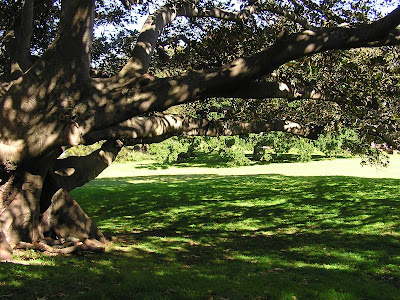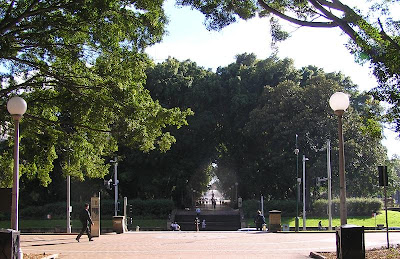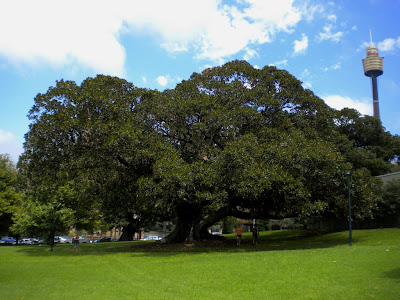There are a great many studies from different parts of the world that all come to the same conclusions bigger trees, bigger canopies give us greater benefits.
It's not all that difficult to understand why since it is the canopy, the surface area of the foliage which has the greatest impact on many of the services that our urban trees deliver. Let's just recap what some of those key services and benefits are....
- Provide shade - regulating temperature and reducing levels of UV radiation
- Capture airborne pollutants - removing both microscopic particles and noxious gases
- Intercept rainfall - reducing peak storm water flows
- Capture Carbon - both in their wood and in the soil
- Enhance residential and commercial values
- Improve physical and psychological human health
Larger Canopy = Greater Benefits
When it comes to establishing just how much more benefit we receive from larger trees compared to smaller trees I think the best summation comes from one of the co-authors of i-Tree David Nowak USDA Forestry Service
A mature tree that is 30” DBH (Diameter at Breast Height) provides 70 times the ecological services (clean air; clean water; wildlife habitat, etc.) of a young sapling that is only 3” DBH
Now there are some obvious immediate implications for the management of our urban forest that result from this well founded well researched argument.
When it comes to urban planning decisions;
The retention of existing established large trees should be a key objective
Now I am sure that most of those reading this will have heard claims about replacement/mitigation plantings more than making up for the loss of existing trees....
Well it is a sad fact that in the last 50yrs we have been spectacularly unsuccessful in growing large trees in our urban areas. Partly this is due to a failure in the past to understand the soil volume requirements for healthy stable tree growth, it is also due to a failure to recognise the importance of our urban trees, cutting costs in planting preparation, establishment maintenance and a total failure to protect that growing space against pressures from in ground services.
 |
| Diagram showing the minimum volume of soil required to support healthy tree growth |
It seems to be a fairly simple equation, big trees in our urban areas are immensely valuable, growing replacement big trees in our urban areas is very hard...we should therefore place far greater value on the big trees we already have, retaining and protecting them within new developments should be the default urban planning position.
Our council should be providing the best outcomes for everyone in our city, not just the developer who wants to maximise their profits by cramming in the biggest floor space permitted in the planning scheme, or getting the absolute maximum number of dwellings in a subdivision.
Changes to the Resource Management Act not withstanding it is the responsibility of our council to ensure that urban planning decisions are balanced and that we the residents and ratepayers actually get the liveable city our civic leaders love to bang on about in press releases and sound bites.





















































